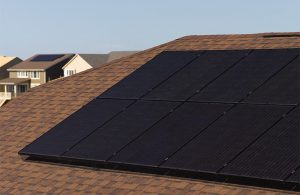The solar forest
The solar forest
by Robert Schreiber
Berlin, Germany (SPX) Dec 18, 2023
In a significant development for environmental policy and climate change mitigation, a new study led by Dr. Rafael Stern, Dr. Jonathan Muller, and Dr. Eyal Rotenberg from Prof. Dan Yakir’s lab at the Earth and Planetary Sciences Department of the Weizmann Institute of Science, provides insightful comparisons between the impacts of forests and solar farms. Published in PNAS Nexus, the study offers a nuanced understanding of how different land uses affect the climate crisis, particularly in arid areas.
The study initially focused on comparing a natural forest located in an arid area to a field of solar panels, commonly referred to as a solar farm, in a similar environment. Arid regions, characterized by abundant sunlight and limited plant diversity and biomass, are prime locations for solar farms.
This choice of location is not incidental; these regions are increasingly becoming the focus of major solar energy projects worldwide. For instance, Israel has operational solar fields in the Arava and the Negev and plans for expansion in Jordan, while China and the European Union are exploring large-scale solar projects in their deserts.
The research team, equipped with a mobile measuring station designed by Yakir and Rotenberg, set out to measure the energy flow between the ground and the atmosphere in these arid areas. This meticulous process involved positioning the station near and within a solar panel field, overcoming the challenges posed by the panels’ sensitivity. Additionally, to draw a parallel with a natural forest, they utilized two decades of data collected from Yatir Forest, the largest of its kind in Israel, located on the edge of the Negev Desert.
Key Findings: Solar Farms vs. Forests
The study’s findings are revealing. Both the natural forest and the solar farm exhibit a similar albedo effect, meaning they both absorb a significant portion of solar radiation. However, their contributions to climate change mitigation vary considerably. The researchers calculated the equilibrium points at which the opposing effects on climate-heat absorption due to dark color and cooling from reduced atmospheric carbon dioxide-balance each other out.
The results show a stark contrast: It takes only about two and a half years for the heat emitted by solar farms to be offset by the carbon emissions saved through the energy they generate.
This calculation includes the carbon emissions from the manufacture, transportation, and operation of the panels, as well as those from batteries used for electricity storage. In contrast, a forest of similar size would require over a century of photosynthesis to offset its heating effect.
Implications for Different Climates
The study further extends its analysis to other climates, including humid environments like the tropics and temperate grassland regions such as Europe. Here, the heating effect of planting large numbers of trees is smaller due to darker ground and higher carbon capture rates by trees. The break-even point in these regions is reached within 15 to 18 years. However, the researchers note the limited availability of open space in these areas for new forestation.
Drs. Stern and Muller articulate the study’s central message: “In arid environments, where most of the open land reserves exist, building solar farms is far more effective than planting forests in addressing the climate crisis.” They emphasize that even small solar panel areas can offset carbon emissions equivalent to much larger forested areas.
Forests’ Role in the Broader Environmental Context
Despite the advantages of solar farms in certain environments, the study underlines the irreplaceable role of forests. Forests absorb nearly a third of humanity’s annual carbon emissions, contribute significantly to the global rain cycle, maintain biodiversity, and have numerous other environmental and social benefits. Therefore, the researchers advocate for a balanced approach: protecting and rehabilitating forests in humid regions while promoting solar panel installations in arid regions.
Research Report:Photovoltaic fields largely outperform afforestation efficiency in global climate change mitigation strategies
Related Links
Weizmann Institute of Science
All About Solar Energy at SolarDaily.com





